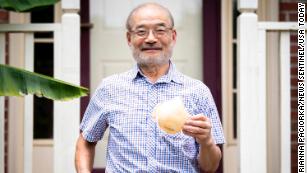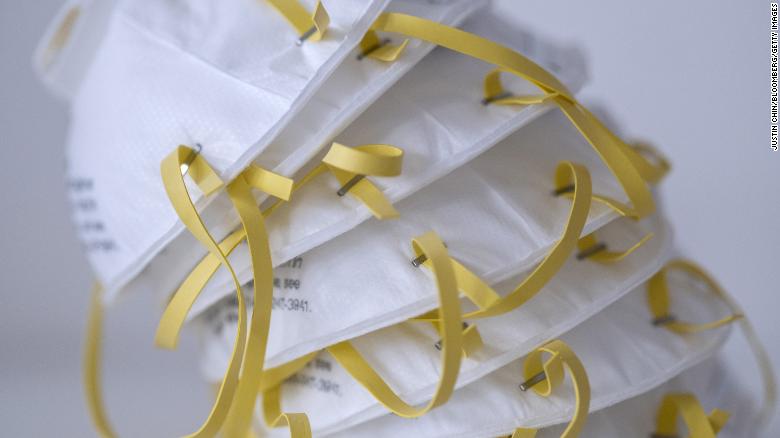https://www.cnn.com/2020/07/15/health/n95-mask-inventor-coronavirus-sanjay-wellness-trnd/index.html
He invented the N95 mask filter. Then the coronavirus pandemic hit and he was called to help once again
By Scottie Andrew, CNN
Updated 2:14 PM ET, Thu July 16, 2020
(CNN)The man who made N95 masks so effective had been retired for over two years when the pandemic struck. But the inventor didn’t think twice about returning to work when healthcare workers needed him most.

Peter Tsai, the inventor of the N95 filtration material, is photographed at his Knoxville home on Wednesday, June 3, 2020.Peter Tsai, a Taiwanese American scientist who invented the synthetic fabric used to make N95 respirators, which is considered the most effective barriers to prevent the spread of coronavirus, resumed work on sterilizing the masks in March as the coronavirus took hold in the US.He spoke with CNN’s Chief Medical Correspondent, Dr. Sanjay Gupta, about resuming his work during the most challenging health crisis of the century.Content by CNN UnderscoredThe best deals in Apple’s Amazon storeYes, Apple has set up shop on Amazon. That means you can get official Apple products with free Prime shipping.”I felt I need to — I need to help the health workers,” Tsai said in his Wednesday appearance on Gupta’s “Coronavirus: Fact vs. Fiction” podcast. “You know, they put their lives at risk. What I know can help them.”Listen to the interview here.
Tsai patented the technology used to make the masks in 1995.Here’s how it works: To block up to 95% of the particles that come in contact with the mask, Tsai made the filters using the corona electrostatic charging method. Put simply, the mask’s filter contains both positive and negative charges. It can attract neutral particles, like bacteria from viruses, and polarize those particles, trapping them before they can pass through the mask.But when Tsai heard about physicians and nurses who were treating coronavirus patients reusing the masks to prevent supply shortages, he got back to work.Tsai dug in at the University of Tennessee, Knoxville’s Research Foundation, working up to 20 hours a day to test new ways to sterilize the masks.He tried a variety of methods: He left the masks out in the sun, put them in the oven, washed them with soap and steamed them, he said.The best method, he found, was keeping the masks in 160-degree dry heat for 30 minutes, which can be feasibly done by hanging them in an oven.But that’s not his preferred method, he told Gupta: He recommends buying seven N95 masks and rotating them, using a new one each day. After using one mask, he hangs it in an isolated spot and doesn’t use it again for seven days, so any bacteria it catches become inactive.

N95 respirators can filter out 95% of droplets.N95 respirators are the most effective face covering, but the US Centers for Disease Control and Prevention warns against the public purchasing and wearing them. They’re fitted to fit physicians’ faces and can often become uncomfortable when worn for long periods of time, and if the public buys them up, healthcare workers could face a severe shortage of them.But people should absolutely wear masks in public, even if they’re not N95 respirators, Tsai told Gupta.”Some people said, ‘I don’t care. I do not need to wear a mask,'” he said. “That is very selfish because you expose your germs to other people. So any mask is good.”
CNN’s Madeleine Thompson contributed to this report.